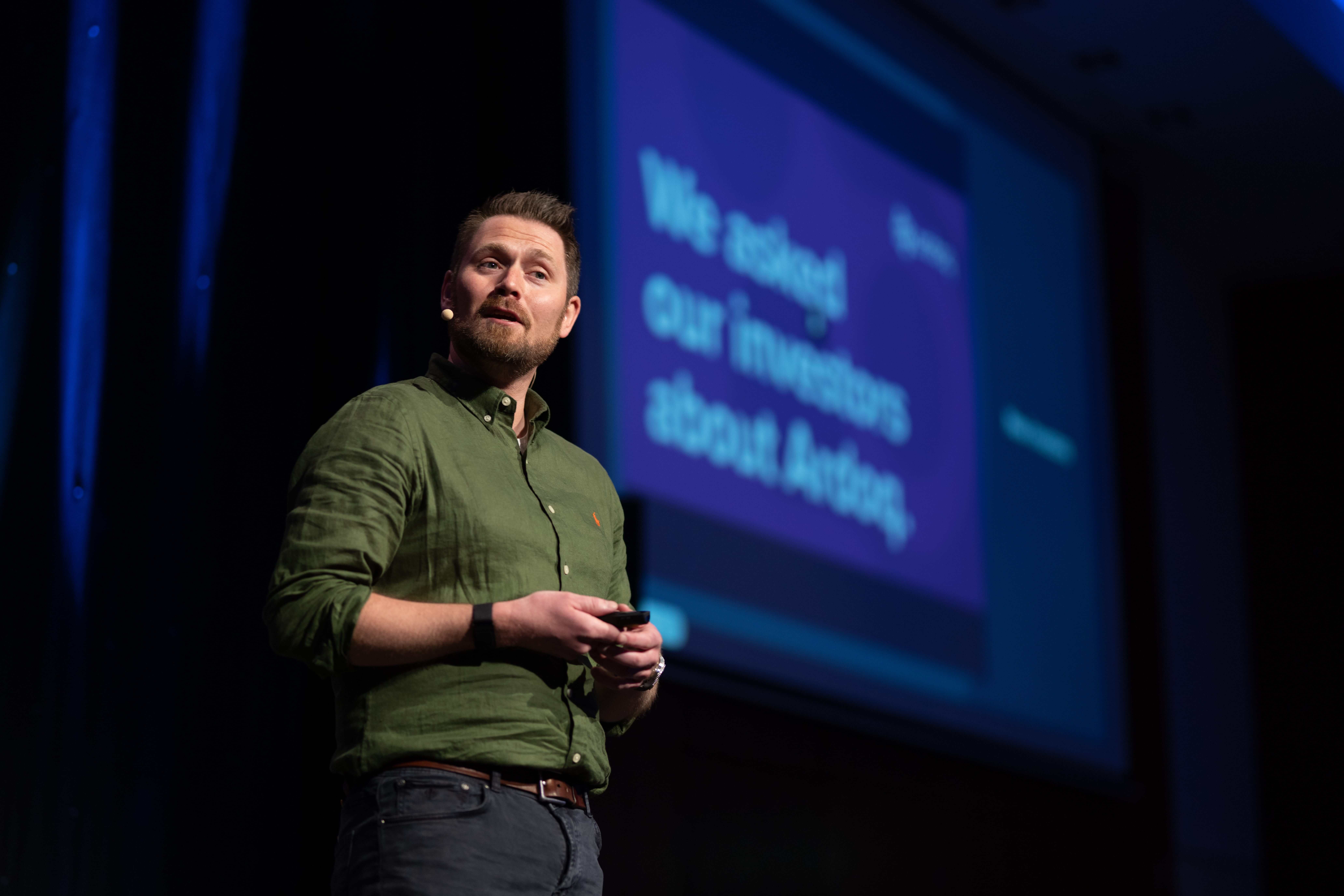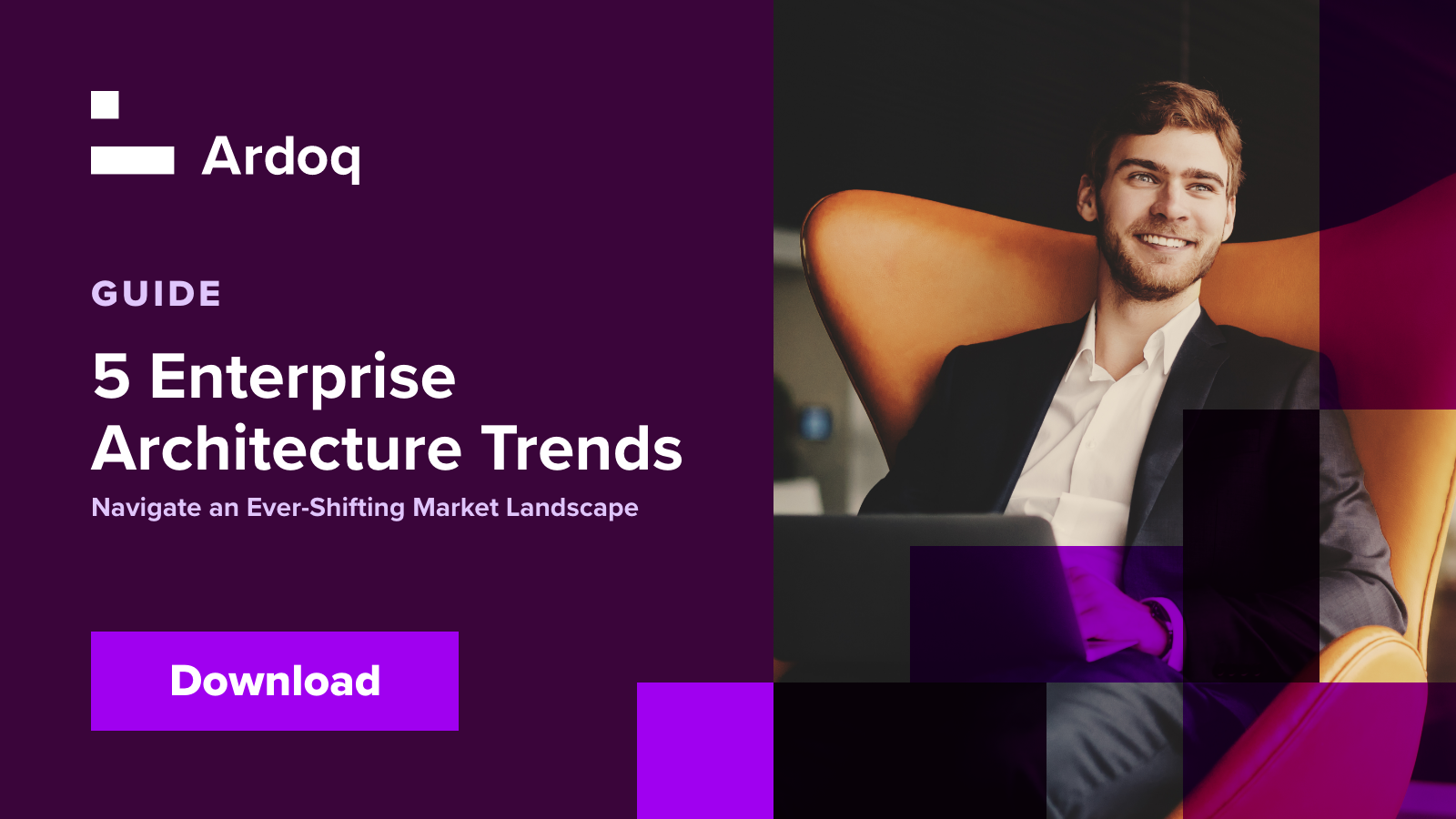Ardoq has come a long way in 10 years from its scrappy beginning with Magnulf and I’s initial vision of changing how people and enterprises work for the better. We’ve grown immensely in size and repute, from being named a leader in Gartner’s Magic Quadrant for three years in a row to the $125 million funding round that is supercharging our global expansion. Today, we have over 200 talented individuals powering our vision of making organizations and change more effective with digital business architecture. We continue to grow at lightning pace, with an exciting move to brand new headquarters anchored in sustainable design coming up in 2024.
Staying Ahead of the Industry
Gartner named us a Leader in the 2023 Gartner® Magic Quadrant for Enterprise Architecture Tools, but what does being a leader in the EA space mean to us?
We believe it's our bold vision and constant evolution that make us a leader when it comes to enabling better business design and profitable digital transformation. We help businesses not just digitize but drive efficiency and innovation. We seek to empower our users to work smarter and make informed decisions. As one of our customers, Scoot Brooker, Business Architect Director at Premier Tech, said:
"The true architects of our business are the leadership team. We are enabling them to continue to have better data, better models, and better insights. With Ardoq, we can funnel the details and massage them into an understandable message."
- Scoot Brooker, Business Architect Director at Premier Tech
There are few things that inspire us more at Ardoq than customers who deeply understand and leverage the full potential of our platform to succeed on their transformation journey. We enable them to make the shift from over-centralized hierarchical structures to more effective and coordinated decentralized decision-making, improving enterprise agility.
Numerous features we’ve worked on speak to this need with dynamic data-driven visualizations, future-state modeling capabilities, as well as critical automation and collaboration tools to more easily embed the power of our platform within an organization’s workflows or current ways of working. All of these add up to make our platform the single source of truth enterprises so desperately need to navigate change with confidence.
The recent acquisition of one of our competitors, LeanIX, by SAP is a testament to the immense potential that the EA industry and new EA platforms have.
“We’re experiencing a strong pull in the market for a truly independent EA platform. Enterprises are looking to modernize their legacy enterprise systems, and they are looking to migrate to best-of-breed cloud-native solutions.”
We are now the leading independent, cloud-native EA platform in the market, strategically positioned and well-funded to help enterprises modernize their core enterprise systems.

The Ever-Changing EA Space: Keeping on Top of Trends
Nowhere is liberation from manual tedium and a refocusing of resources more necessary than in Enterprise Architecture. Unfortunately, Enterprise Architecture has sometimes come to be perceived as a field where substantial effort is poured into maintaining rigid models and data to unclear benefit for the rest of the organization. That mentality is slowly changing for many forward-thinking companies, and we are spearheading this drive to change the entire positioning and practice of EA as a whole. EA teams should be focusing their valuable time and energy on strategic work that creates value.
Enterprise Architecture as a practice and a field has so much value to offer and increasingly more as it evolves. Already, we see a huge shift from manual to data-driven EA practices leveraging automation, an increased focus on collaboration, the exploration of AI's potential in digital transformation and EA’s massive potential in enabling sustainable business execution. Here are the big trends we see that will greatly leverage or impact the EA practice of tomorrow:
1) Beyond IT: Open Socio-Technical Architecture (STA)
Mapping applications and capabilities are only the beginning of what EA can do. With STA, organizations can get an overview and see interdependencies down to the level of people and teams. This helps with the optimization of overlapping functions, improving parallel collaboration to grow end-to-end value and accelerate the business’ growth.
2) Enabling Project to Product
More organizations are moving from project to product-focused teams to speed up their ability to innovate and drive change. Also known as Agile Organizations, Continuous Value Delivery, or BizDevOps, this trend refers to the evolution away from the plan-build-run project-focused approach, which is the norm now, to a product-focused approach that enables more long-lived continuous change. EA becomes ever more critical with this new structure to aid the alignment of these independent teams to the organization’s strategy and goals.
3) The Democratization of EA
As more organizations move towards distributed decision-making and flatter structures, EA too must become more democratized instead of staying under the strict guardianship and maintenance of a handful of architects. EA insights are essential in supporting better, data-driven decisions as teams become more independent with additional responsibilities. EA as a function will take on a more facilitative and consulting role to empower independent teams to become more efficient and productive with fewer hierarchical bottlenecks.
4) Continuous Improvement of Way-of-Working
Where companies in the past were more rigid and structured through one-off activities, today, more are trending towards organizational design as a continuous process. As a company’s architecture should always reflect its organization and communication pathways, this means that EA, too, must be more agile and flexible to support the organization’s constant iteration, speedy decision-making, and adaptation to changes in the external business environment.
5) EA as a Digital Twin of an Organization
The future of EA is being able to construct the digital twin of an organization (DTO), which is a functional model that shows how the structural design of the enterprise impacts its ability to execute. Having this virtual counterpart is valuable in continuously adjusting for tomorrow based on the information available and seeing behavioral information overlaid on the organization’s structure. These insights can help businesses shorten the time to realize business ideas and see more directly how the enterprise’s design affects its ability to execute.
An Agile Platform for Sustainable Business
“The only thing constant is change.”
With all of this exciting potential in EA as a whole, we’re working hard to ensure that our platform, too, continues to evolve to support the business needs of today and tomorrow. We recognize that making change and digital transformation profitable is a global problem, and we have big, global ambitions to be the ones to address these challenges first and best.
From a tech and product perspective, Ardoq has always been a cloud-native EA platform with a substantial agile edge over on-premise alternatives, and we continue to build on that advantage with speed. We tread the fine line of balancing operations and innovation, drawing in the best minds from across the world to ensure that we have a rich diversity of backgrounds and views to keep us sharp.
Ardoq Discover, our bold bid to make EA insights easily accessible for non-EAs and help everyone make impactful decisions, is a prime example of our daring to innovate and challenge the preconceived notions of what EA is, what EA platforms are, and who is using them. Insights are only valuable if the whole organization can access them in a meaningful way, and that is our mission with Ardoq Discover. With Ardoq Labs, we invite our customers to work with us to define the future functionality of Ardoq and explore the potential of AI, taking our agile product development to a new level.
Our move upmarket with an increasing portfolio of Fortune 10 companies is a testament to the depth of our platform. Ardoq’s unique flexibility is able to support these immensely complex companies, such as ExxonMobil, MUFG, and British Telecom, that need customization and the ability to federate EA work effectively.
Evolution Guided By Vision
The core of Ardoq’s vision continues to live on today. Our values, “Bold, Caring, and Driven,” were first formalized in 2017 to ensure that as we scaled, we would continue to be anchored by the things that make Ardoq a great company with a cutting-edge digital business architecture platform in the first place. These values continue to be an integral part of how big decisions are made about our present and future. It’s often a challenging undertaking to find the middle ground between these conflicting values, but we feel that balancing them is what challenges us to create an even better platform and company.
We have a lot to be proud of over the last ten years of building this incredible company that helps organizations all over the world succeed with digital transformation. There is also so much to look forward to as we constantly challenge ourselves to push boundaries and redefine the field. Thank you to everyone who's been a part of the journey, and here's to the next ten.
Deep dive into the key trends we see in Enterprise Architecture for today's landscape.
